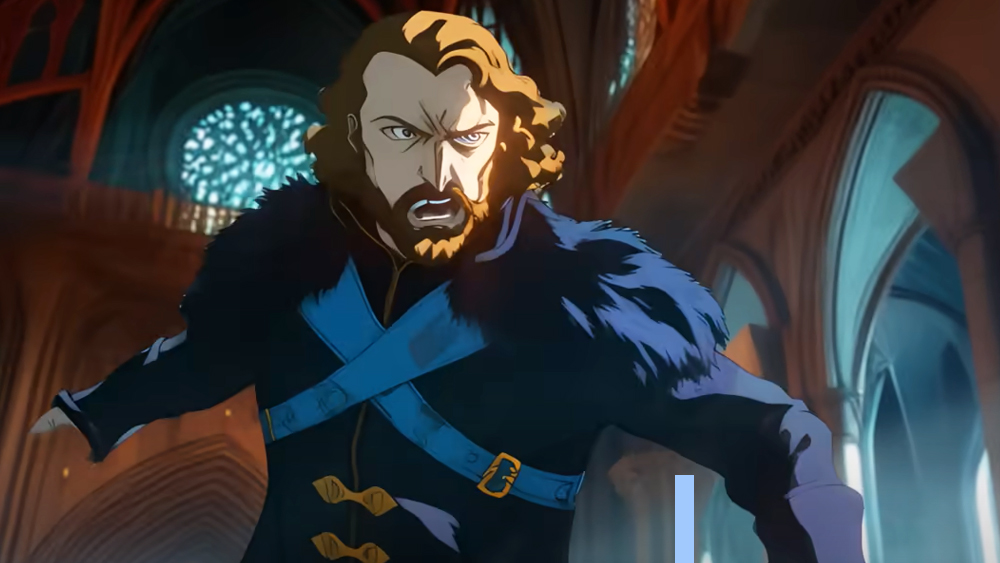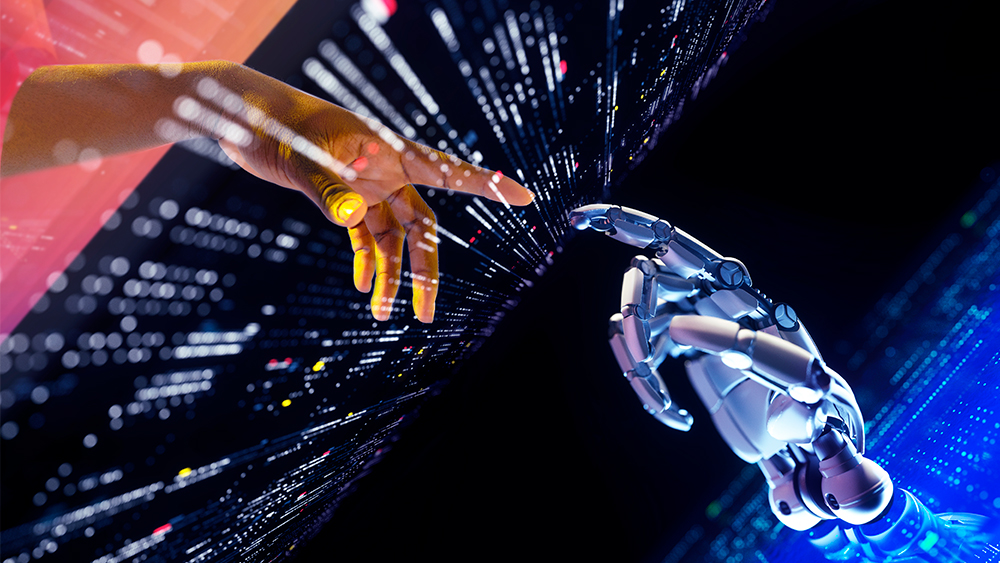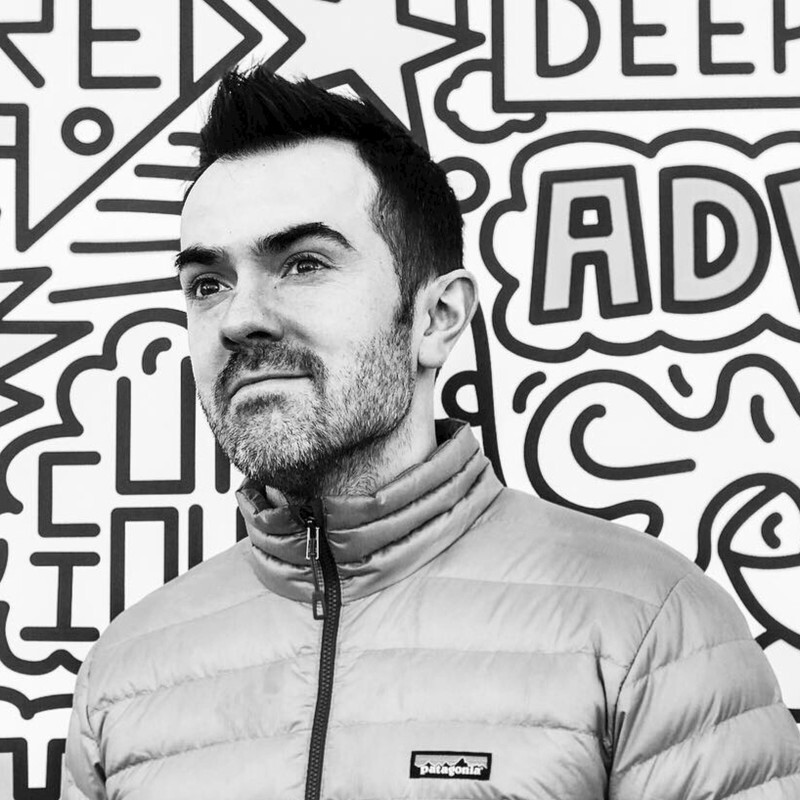AI's here and we’re already terribly bored
Executive creative director Michael Bartley considers what role AI can really play in the future of creative work.
When creative genius Charlie Brooker talked about feeling a “cold spike of fear” moments after instructing ChatGPT to write an outline for his Black Mirror series, I got it.
The paranoia Charlie felt - around AI replacing him - is something that’s run through the minds of all creatives this past year - mine included. Of course, for him, and many others, the fear of being threatened by machines was exceptionally short-lived. Predictably - at least now - ChatGPT was only able to regurgitate a “boring and derivative” rehash of every episode of Black Mirror already in existence.
For a TV series known for its uniquely gripping storytelling and suspenseful narratives that – rather ironically – delve into the dark impacts of technological advancements, AI was never going to hit the mark the way a human can.
Human endeavours like those from Charlie are uniquely captivating and beautiful because they stem from individual points of view. Unlike AI, we infuse our work with empathy, ambition and personal touch. This desire to share, collaborate, understand, and connect adds depth and authenticity.
Yes, we’re illogical, messy, make mistakes and it’s in our DNA to reject, remix, and discover, but for these very reasons, we can set trends and create in ways that AI, bound by logic, and a rear view mirror, simply cannot replicate. Humanity is a beautiful mess.
But all this brings up an interesting point - if the imperfect and inherently human nature associated with the process of creating something beautiful is not always logical or mathematical, can AI have a place in the creative process, and if so, how?
You can’t sit with us

It’s not surprising - given the fear and apprehension around AI replacing tasks traditionally handled by artists - that many creatives are channelling their inner Mean Girl when it comes to letting AI have a place at the table. But, whether we want to reject AI-generated creative content completely or not, it’s clearly here to stay and you’d be naive to give it the cold shoulder.
Get the Creative Bloq Newsletter
Daily design news, reviews, how-tos and more, as picked by the editors.
Shifts such as this one have occurred in various professions throughout history, and there’ll no doubt be more to come. So instead of outright rejection, I believe we should focus on laying ethical foundations for AI usage, learning the tools, and finding new creative spaces that this technology will inevitably create. Only when we embrace these changes can we position individuals as pioneers in a transforming landscape, where the world is bound to be altered by the intersection of AI and creativity - whether we like it or not. To have a voice in our future world, you must embrace the reality with arms wide.
That being said, it’s my view that we should still be cautious about AI’s limitations when it comes to creativity. A few key areas come to mind:
- Consistency: In my experience, AI excels as a catalyst for new ideas, but struggles when it comes to maintaining the level of consistency crucial for creative endeavours such as a body of work, a brand, or a collection, where visual elements and techniques need to align. Brand is a marathon, not a sprint.
- Art direction: The core idea of the book ‘Steal like an artist’ by Austin Kleon is the act of filling the library of the mind to create unique connections in creative work. That has a real value to it and is often not understood outside of the creative community. If we leave the art direction to someone that doesn’t appreciate the creative process, they’ll often get subpar results as their ‘eye’ isn’t there yet.
- Theft: With AI currently grappling with straight theft from artists’ styles, famous compositions, and hero frames in films, originality - a crucial aspect in creativity - is at stake. In fact, it always has been, but AI is kicking things up a notch. Tastemakers continue to lead from the front and then everything is slowly but surely remixed, stolen, copied into oblivion.
- Structure: The blank page is the enemy of most, the daunting white wall feeding your fears. AI struggles with true substance, providing new thought or meaty relevance. Instead it merely provides a new way of thinking and realising the structure of your ideas. Need a screenplay on the struggles of teenage life? Great! That dialogue? Cringe.
- Inspiration: Human inspiration can come from anywhere and everywhere - non-logical places, disparate art forms, a feeling of loss, nostalgia, love, etc. This inherent ability of humans to draw inspiration from diverse and often unconventional sources is a distinct advantage over AI in the realm of creativity.
Creating a culture that fuels creativity - and where AI fits in

Having firmly concluded that the creative process is nothing without human input, what exactly do you need to create the perfect culture for fostering creativity? I tend to recommend a healthy mix of the following:
- Safety: To explore, test and fail comfortably, you must first feel safe to do so around others. Work with those that mirror this mentality to ensure that great ideas don’t stay hidden.
- Connection: There must be trust and connection with those you work with to allow others to build on your ideas - and to build others up.
- Play: Room for play is vital, it offers up time to let things simmer and explore what they want to be. While AI is often narrow in what it makes - a single image for example - brands are massive connected systems, and I find the very best ones allow for a lot of play and expression within them. Creativity thrives within constraints and a great brand will elevate this ability.
- Research: Creativity is about a deep connection, whether that’s to a goal, place or time. But you must be in the moment to fully understand the world you are in, the person you are trying to communicate to and the message you are trying to convey. Creativity is born in focus, built from an obsession of asking ‘why?’ to develop your unique point of view.
- Life experience: If creative inspiration comes from experiences, then live a full life and fill your mind with them; running, music, hobbies, resting, being social, exploring a new neighbourhood and cooking will all test new pathways in your mind.
- Reject, renew and remix: cultivating a culture that fuels creativity involves a cycle of rejection, renewal, and remix. This way we can encourage individuals to challenge existing norms, continuously refresh their creative approaches, and draw inspiration from culture, past and present.
Embracing these elements creates an environment where unique points of view can thrive. But where, if anywhere, does AI fit into this process?
As a complement to human efforts, as opposed to a replacement, AI can act as a remarkable catalyst for the human eye by translating the ceaseless flow of inspiration from the creative mind into tangible visuals.
It can also play a significant role in the exploration of ‘What ifs’ during the creative process. Assisting in envisioning alternative scenarios, it can help to build momentum and refine the message being conveyed. This capacity for speculative exploration allows for a more dynamic and iterative approach to creative development.
Finally, I believe that AI can be exceptionally useful when it comes to overcoming creative blocks, especially during the editing and curating stages. Propelling the creative process forwards, I’ve seen it help individuals move beyond the great barrier of the blank page and enhance the overall quality of the final creative output.
The future
Right now, there’s a lot of hype surrounding AI’s capabilities in the creative process. But this has come before; the fear of stock photography, the advent of CGI, even video production devaluing the photograph. While the AI phase has its look and it will be remembered and teased as such by some, for others, it’s the new must-have game-changing tool - despite the essence of creation lying not in the tool itself but in the act of creating. And for a few, it’s taking over the world.
But once all this hype dies down, and the excitement, fear and anger settle, I can see AI finding its niche as yet another tool, tailored to individual preferences and creative needs.
So rather than being perceived as a standalone creative force, overshadowing humans, let’s hope it evolves into a valuable assistant, helping us augment our skills and jumpstart our ideas. Our passion. Our point of view.
The world is waiting for you, get making.
For more on AI, see our guide to the best AI art generators.

Thank you for reading 5 articles this month* Join now for unlimited access
Enjoy your first month for just £1 / $1 / €1
*Read 5 free articles per month without a subscription

Join now for unlimited access
Try first month for just £1 / $1 / €1

